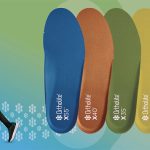Big 5 Sporting Goods President & CEO Steve Miller called 2022 “a very dynamic year for the retail industry, transitioning from the challenges of the pandemic to a new set of economic challenges with increasingly cautious consumer sentiment and persistent cost inflation amid growing concern for an economic downturn.” But, he said, it was not a “blockbuster year like that reported in 2021,” when the retailer benefited from “unprecedented demand and unique sales drivers.”
“We produced strong earnings in 2022 and our profitability continued to compare favorably to pre-pandemic years reflecting the evolution of our business model,” Miller suggested on a conference call with analysts. “We ended the year in a solid financial condition with a debt-free balance sheet and healthy inventory.”
Big 5 reported net sales of $238.3 million in the fourth quarter, compared to $273.4 million in the fourth quarter of 2021. Same-store sales for the fourth quarter were down 13.2 percent, which Miller said was “toward the low end of our guidance range that called for a high-single to low-double-digit decrease.” Transactions for the fourth quarter were down high-single digits year-over-year, with average ticket down mid-single digits.
“Our sales for the quarter were generally on target leading up to Black Friday, but trends decelerated in December as inflationary pressures and economic uncertainty appeared to impact holiday discretionary spending to a greater extent than we had initially anticipated,” Miller explained.
Gross profit for the fiscal 2022 fourth quarter was $79.8 million compared to record gross profit of $103 million in the fourth quarter of the prior year. Gross profit margin of 33.5 percent in the fourth quarter declined from the 37.7 percent recorded in the fourth quarter of the prior year.
“In the face of the top-line headwinds, we have continued to focus on prioritizing merchandise margins to optimize gross profit dollars,” Miller detailed. He said they have closely managed inventory and have not needed to be overly promotional. “Although our fourth quarter merchandise margins declined by 129 basis points compared to the record margins in the prior year, our 2022 fourth quarter merchandise margins increased by over 300 basis points versus the pre-pandemic fourth quarter of 2019,” Miller said.
The decrease in gross profit margin year-over-year primarily reflected the decrease in merchandise margins noted by Miller, coupled with higher store occupancy and distribution expense, including the cost to capitalize into inventory, as a percentage of net sales.
“Our merchandise margins were on a positive trajectory prior to the pandemic and we continue to benefit from the merchandising, pricing and promotional changes we have made over the past several years,” Miller explained. “As we’ve evolved our model by reducing our chain-wide print advertising, we’ve been able to significantly expand our merchandise margins, while operating with less inventory. We now have greater flexibility in a customized product assortment by store, which in turn has reduced our levels of clearance product. And of course, our cost structure benefits greatly from the reduced advertising expense.”
Miller noted that they saw a “significant softening of consumer sentiment in spending, particularly for discretionary products” over the course of 2022. “While in some respects our business benefits in this environment, due to our price points and values that we provide to our customers, those benefits have been more than offset by the realities of the broader macroeconomic forces in play,” he said.
Overall, SG&A increased $1.4 million in the fiscal 2022 fourth quarter versus the prior-year period, primarily reflecting continued upward pressure on labor costs and other broad-based inflationary impacts, partially offset by lower performance-based incentive accruals. As a percent of net sales, SG&A expense was 32.5 percent in the fiscal 2022 fourth quarter versus 27.9 percent in the 2021 fourth quarter, reflecting the deleveraging effect of increased expense on a lower sales base.
Net income for the fourth quarter was $1.7 million, or 8 cents per diluted share, in the fourth quarter, compared to net income of $19.9 million, or 89 cents per diluted share, in the fourth quarter of fiscal 2021. EBITDA totaled $6.9 million for the fourth quarter of fiscal 2022 compared to $31.5 million in the fourth quarter of fiscal 2021.
For the full year, net sales were $995.5 million compared to record net sales of $1.16 billion in the prior year. Same-store sales decreased 14.5 percent for fiscal 2022 versus the comparable prior-year period. Net income for fiscal 2022 was $26.1 million, or $1.18 per diluted share, including a previously reported charge in the second quarter of 3 cents per diluted share, compared to net income for fiscal 2021 of $102.4 million, or $4.55 per diluted share, including a previously-reported net benefit of 6 cents per diluted share. Adjusted EBITDA was $52.6 million for the 2022 full year compared to a record $152 million in the prior year.
Merchandise inventory at year-end increased 9.6 percent year-over-year, primarily reflecting “more normalized inventory levels following the significant sell-through and supply chain challenges in the prior year.” Merchandise inventory at the end of fiscal 2022 was said to be down 5.1 percent compared with the fiscal 2019 year-end, “reflecting the evolution of our model that allows us to now operate with less inventory.”
“Given the winter seasonal strength, our winter inventory carryover this year will be significantly below that of last year,” Miller suggested. “Overall, we remain pleased with our inventory position. We believe the current environment is setting up positively for opportunistic buys, this is a historical strength of ours and we are closely evaluating our inventories to ensure that we remain well-positioned to take advantage of these opportunities as they arise.”
Looking at the current first quarter-to-date, Big 5 same-store sales are running down in the low-single-digit range versus the comp period last year. The retailer posted positive year-over-year sales growth in January, benefiting from favorable seasonal winter weather in their markets in the west that drove demand for winter products. Miller said the strong demand for winter products in January was partially offset by softer trends across other product categories.
In February, winter sales have reportedly “remained strong.” But Miller said that over the course of the quarter, winter products become progressively less impactful to their overall results and same-store sales have shifted into the negative, reflecting the increasing pressures on discretionary spending. “We anticipate that the environment will remain challenging over the balance of the first quarter,” he surmised.
“Although we are certainly facing pressures both to our top line and to our expenses, we feel well equipped to tackle the challenges,” Miller said in conclusion. “We have the experience of managing through a wide range of economic cycles over many decades. We are intently focused on managing all aspects of the business within our control, they are taking steps to reduce operating costs in an effort to mitigate inflationary expense pressures. We have a healthy balance sheet, which provides us plenty of flexibility as we navigate the current environment and position the company for solid growth as the overall economy improves.”
For the fiscal 2023 first quarter, Big 5 expects same-store sales to decrease in the mid-single-digit range compared to the fiscal 2022 first quarter. The company’s same-store sales guidance reflects an expectation that macroeconomic headwinds will continue to impact consumer discretionary spending over the balance of the first quarter. Fiscal 2023 first quarter EPS is expected in the range of negative 2 cents to positive 6 cents, which compares to fiscal 2022 first-quarter earnings per diluted share of 41 cents.
Photo courtesy Big 5
















